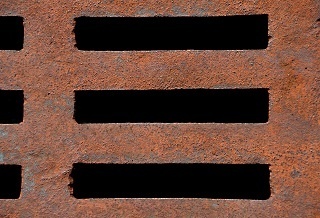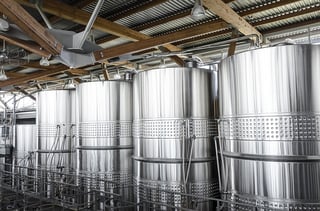5 minute read
Stainless Steel has been around for a little over a century now, which is not that long in the grand scheme of things. And yet, despite its recent invention, stainless steel products are so common that many take them for granted.
From cutlery to artwork, stainless steel has revolutionized the modern world. But what is stainless steel? Why is it so useful? The answer to those questions lies in the chemical elements that compose stainless steel alloys.
The Invention of Stainless Steel
 Like lots of inventions, stainless steel was being researched simultaneously in several European countries and the United States.
Like lots of inventions, stainless steel was being researched simultaneously in several European countries and the United States.
Germans, Americans, and even the Polish make claims to the first invention of stainless steel.
Even though there are many claims to its invention, most people believe it was a British scientist named Harry Brearley that developed the first version of stainless steel.
Harry Brearley was the lead researcher at Brown Firth Laboratories in 1913 when he tossed a chunk of experimental steel into the trashcan.
And most great inventions usually start off that way don't they?
Penicillin was discovered because of a forgotten petri dish.
Super glue was supposed to be a clear plastic for gun sights before it started sticking to everything it touched.
The microwave is in almost every home because of a melted chocolate bar in Percy Spencer's pocket.
According to legend, Brearley glanced in the trashcan later only to discover that sample hadn't rusted out like all the rest.
A more likely story is that Brearley was scratching his experimental samples to test whether or not they resisted corrosion. He found that the metal he created was unaffected by many substances such as industrial chemicals and vinegar.
This painstaking work is widely regarded as the invention of, what is today considered, stainless steel.
 Early stainless steel makers identified gun barrels and cutlery as potential uses for the new steel alloy.
Early stainless steel makers identified gun barrels and cutlery as potential uses for the new steel alloy.
While stainless steel is still used for those applications today, metallurgists of the 19th century never could have imagined how important their discovery would be.
Steel -- What is It?
Before we find out what stainless steel is, we need to know what steel is and why it is so useful.
According to Merriam Webster Dictionary, steel is defined as "commercial iron that contains carbon in any amount up to about 1.7 percent as an essential alloying constituent." But what does that mean in layman's terms?
Simply put, steel is made primarily out of iron (Fe) with a small amount of carbon (C). No steel is made out of just those two elements, but in certain quantities those are the two primary distinguishing components of steel.
Steel is used in many applications: skyscraper construction, rebar, Geiger counters and many more.
Researchers understood that steel that doesn't rust would be useful for applications such as weaponry and cutlery as I mentioned earlier. But stainless steel is almost essential for some applications such as home appliances and surgical instruments.
What differentiates stainless steel from other types of steel?
Other alloy elements are often added to steel to perform various functions such as corrosion resistance, strength, and machinability.
Stainless steel alloys have a minimum chromium (Cr) content unlike other types of steel. The relationship between chromium and corrosion resistance was discovered only 2 years before Harry Brearley's "rustless steel."
Specifically, two Germans named Monnartz and Borchers found that steel alloys were more corrosion resistant with 10.5 percent chromium content.
Molybdenum also increases corrosion resistance, but chromium is the primary component of stainless steel that gives it corrosion resistance.
Nickel is also an important piece of the stainless steel formula because it generally makes up the second largest portion of stainless steel after chromium. Nickel increases strength and hardness.
 What makes stainless steel stainless?
What makes stainless steel stainless?
Why doesn't stainless steel rust? Believe it or not, stainless steel actually does rust.
According to Metallurgical Engineer Michael L. Free of the University of Utah, alloying elements in stainless steel, and especially chromium, "react with oxygen from water and air to form a very thin, stable film that consists of such corrosion products as metal oxides and hydroxides."
Free goes on to explain that this film is invisible to the naked eye and prevents the same corrosion from happening to the rest of the metal. It forms a protective barrier through which oxygen in the atmosphere and other chemicals can't break.
So stainless steel doesn't rust because it does rust!
Varieties of Stainless Steel
There are 5 categories of stainless steel: ferritic, austenitic, martensitic, duplex, and precipitation hardening.
Most stainless steel products you will encounter in your day to day life and at work are the austenitic types 304 and 316 stainless steel.
 These are the 2 most common kinds of stainless steel that Paul Mueller Company customers request because they are relatively inexpensive and suitable for a wide variety of applications where corrosion protection is critical.
These are the 2 most common kinds of stainless steel that Paul Mueller Company customers request because they are relatively inexpensive and suitable for a wide variety of applications where corrosion protection is critical.
Since 304 and 316 grade stainless steel are some of the most common in the industry, let's look at the pros and cons of each one and their chemical compositions.
304 Grade Stainless Steel
The usual composition of 304 stainless steel relies heavily on chromium for corrosion protection, while nickel and iron provide important formability and strength characteristics. One of the most common compositions of 304 stainless steel, 18-8, is shown below:
- Carbon - 0.08% max.
- Manganese 2.00% max.
- Phosphorus 0.045% max.
- Sulfur - 0.03% max.
- Silicon - 1.00% max.
- Chromium - 18.00-20.00%
- Nickel - 8.00-15.00%
- Iron - Remaining %
Pros of 304 Stainless Steel:
- Not easily rusted
- Low cost compared to most other readily available stainless steels
Cons on 304 Stainless Steel:
- Susceptible to pitting when in high salt environments such as ocean water
- Does tarnish over time even though it doesn't rust
316 Grade Stainless Steel
The typical composition of 316 stainless steel differs from 304 in that it substitutes a small amount of chromium for molybdenum. This increases the corrosion resistance to salts and, more specifically, chlorides. Here is a typical chemical composition of 316 grade stainless steel:
- Carbon - 0.08% max.
- Manganese - 2.00% max.
- Phosphorus - 0.045% max.
- Sulfur - 0.03% max.
- Silicon - 1.00% max.
- Chromium - 16.00-18.00%
- Nickel - 10.00-14.00%
- Molybdenum - 2.00-3.00%
- Iron - Remaining %
Pros of 316 Stainless Steel:
- Less susceptible to environments with high salt content
- Increased corrosion resistance against industrial chemicals
- Versatile when it comes to forming and end-use
Cons of 316 Stainless Steel:
- More expensive than 304 stainless steel
- Not quite as strong as 304 stainless steel
The grade of stainless steel required for your project depends on the ingredients or chemicals being used in the tank. Often, engineers will specify a certain grade because other available grades are incompatible with the tank's future contents.
Stainless steel is at the heart of Paul Mueller Company. Turning raw materials, like stainless steel, into real impact is what we do.
If this article was helpful to you, we've created another resource to help you learn more about tank components. Click the link below to download the Tank Component Buyer's Glossary of Terms.



